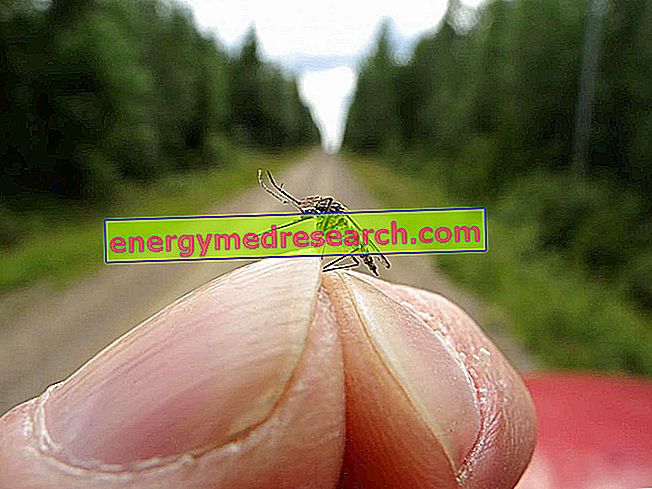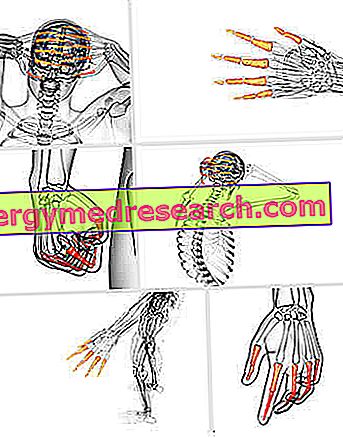Related articles: Psoriasis
Definition
Psoriasis is an inflammatory pathology of the skin. It is a non-contagious disease, usually chronic-relapsing.
Psoriasis is due to hyperproliferation of epidermal keratinocytes and is associated with inflammation of the epidermis and dermis. This process is responsible for the appearance of lesions (plaques), with erythema (redness) and desquamation (the replacement of skin cells is much faster: it goes from 28 to 3-7 days).
The causes of psoriasis have not yet been fully clarified, but a role is certainly played by the immune system. The disease can occur at any age, often following the intervention of triggering factors, such as: traumas (mechanical, chemical, allergic or other), infections, sunburn, hormonal changes, alcohol and smoking abuse, emotional stress and some medications (in particular: β-blockers, chloroquine, lithium, ACE inhibitors and interferon-alpha). Familiarity is also frequent (several genes are potentially involved in the onset of the disease).
Forms of Psoriasis
The plaque variant (psoriasis vulgaris) is the most common form (80-90% of cases)

Most common symptoms and signs *
- Alopecia
- Increase in the ESR
- Dry Scalp
- Decreased sweating
- Pain in the penis
- Hand and wrist pain
- Articolar pains
- Subungual hemorrhage
- Eosinophilia
- Erythema
- Joint swelling
- Subungual hyperkeratosis
- Hyperuricemia
- hypohidrosis
- leukonychia
- Leukopenia
- onycholysis
- papules
- Dry skin
- Nail pitting
- plaques
- itch
- Leg itch
- Itching in the hands
- Itching in the head
- Vaginal itching
- Pustules
- Ragadi Dita
- Joint stiffness
- Stiffness in the muscles of the back and neck
- seborrhea
- Scales on the skin
- Cracked Heels
- Brittle nails
- Coarse and opaque nails
Further indications
In most cases, psoriasis occurs with papules and plaques with clear margins. These erythematous (reddish) and roundish patches are covered with silvery-gray scales due to the accelerated epidermal cell turnover. These lesions can be asymptomatic or cause only a slight occasional itching; however, the aesthetic implications may be important.
The areas most affected by psoriasis are the scalp, elbows, knees and gluteus groove. The soles of the feet and the palms of the hands, the eyebrows, the armpits, the navel and the perianal region may also be affected. The plates are raised on the skin and have a variable size: they can have dimensions of a few centimeters or affect most of the body surface due to the confluence of contiguous lesions. The severity of the disease and the impact on quality of life also vary from person to person. Psoriasis can also affect the nails (causes irregular depressions, thickening, onycholysis and flaking of the nail plate), mucous membranes and the region near the eyes (ocular psoriasis). Some individuals may develop a serious disease involving the joints (psoriatic arthritis: it typically occurs with pain, swelling and joint stiffness).
The skin lesions appear gradually and are characterized by a chronic-relapsing course: periods of remission in which the symptoms are attenuated or disappear completely can be alternated with others in which the symptoms become more severe.
Depending on the appearance of the lesions, different subtypes of psoriasis are recognized. Among these, plaque psoriasis (or psoriasis vulgaris) is the most common form.
Diagnosis is based on the clinical appearance and distribution of skin lesions. Rarely, it is necessary to perform a histological examination (biopsy) to exclude other conditions.
The therapeutic options are numerous, even if not decisive but aimed at keeping the disease under control. Treatments for milder forms of psoriasis include the use of emollients (creams or ointments), topical medications (including analogues of vitamin D, retinoids, tar derivatives and corticosteroids) and phototherapy. In the most serious cases, it is necessary to resort to taking systemic drugs (methotrexate, cyclosporine or biological drugs).



